Presentation
Abdominopelvic pain and palpable mass on physical exam.
Patient Data
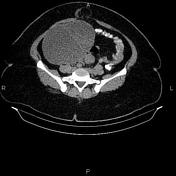

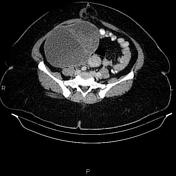

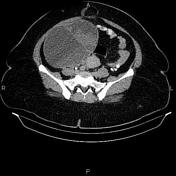

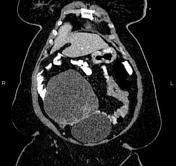

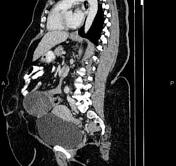

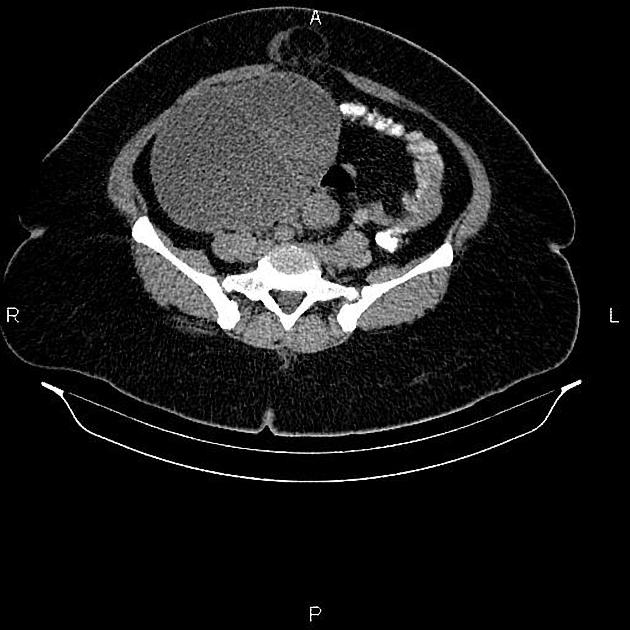
A 167×151×153 mm thick walled septated cystic mass with enhancing solid component is present at right adnexa. The right ovary couldn’t be defined separate than mentioned mass. A few small lymphadenopathies are seen at lower para-aortocaval and right parailiac regions with SAD less than 9 mm.
Large fat containing umbilical hernia is present.
Case Discussion
Right adnexal complex cystic solid mass; pathology proven ovarian serous cystadenocarcinoma which is the malignant form of ovarian serous tumor, the most common type of ovarian epithelial tumor. It is the most common type of ovarian malignancy.




 Unable to process the form. Check for errors and try again.
Unable to process the form. Check for errors and try again.